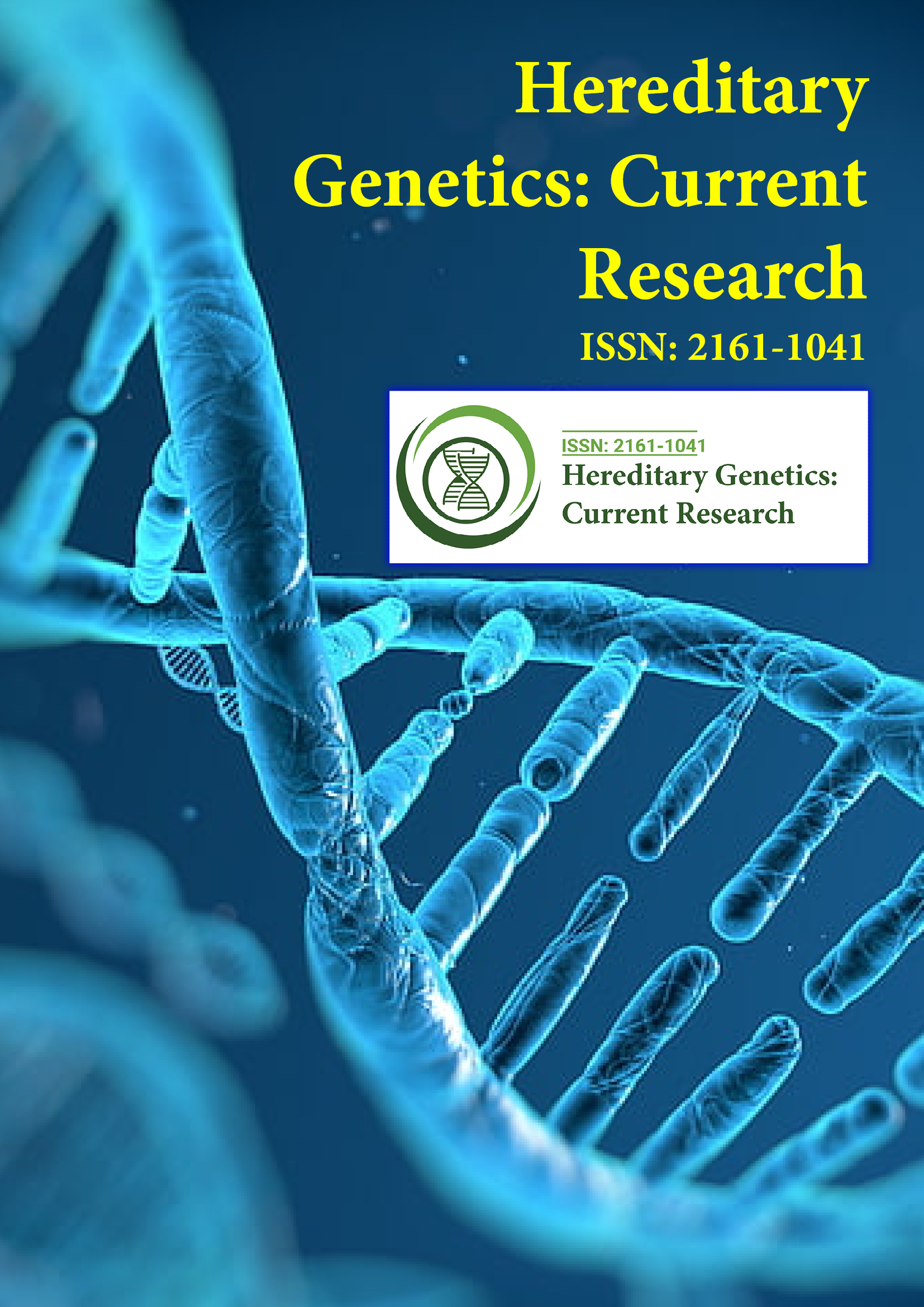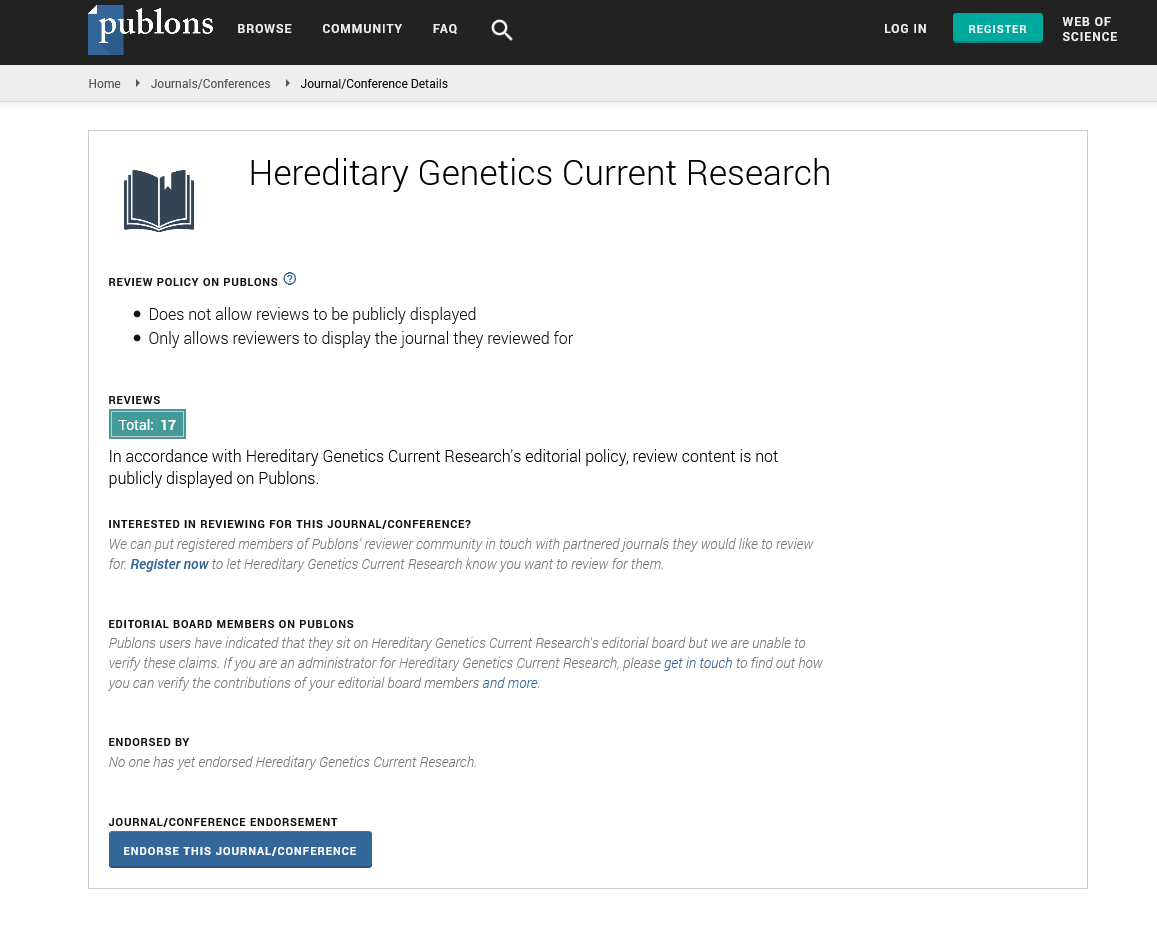Indexed In
- Open J Gate
- Genamics JournalSeek
- CiteFactor
- RefSeek
- Hamdard University
- EBSCO A-Z
- NSD - Norwegian Centre for Research Data
- OCLC- WorldCat
- Publons
- Geneva Foundation for Medical Education and Research
- Euro Pub
- Google Scholar
Useful Links
Share This Page
Journal Flyer

Open Access Journals
- Agri and Aquaculture
- Biochemistry
- Bioinformatics & Systems Biology
- Business & Management
- Chemistry
- Clinical Sciences
- Engineering
- Food & Nutrition
- General Science
- Genetics & Molecular Biology
- Immunology & Microbiology
- Medical Sciences
- Neuroscience & Psychology
- Nursing & Health Care
- Pharmaceutical Sciences
Editorial - (2021) Volume 10, Issue 6
Brief Description of the Spinal Muscular Atrophy
Ruth Gabriela*Received: 02-Nov-2021 Published: 23-Nov-2021, DOI: 10.35248/2161-1041.21.10.e207
Description
epilepsy, spinal muscular atrophy with predominant lower extremities, X-linked infantile spinal muscular atrophy, and spinal muscular atrophy with type 1 respiratory distress Spinal muscular atrophy and associated motor neuron disease are caused by mutations in other genes.Spinal muscular atrophy type 0 occurs prenatally and is the rarest and most severe form of the disease. Affected babies often have joint malformations (contractures) because they move less in the womb. Muscle tone (hypotension) at birth is very weak. Their respiratory muscles are so weak that they often cannot survive infancy due to respiratory failure. Some infants with type 0 spinal muscular atrophy have heart defects that have existed since birth (congenital).
Spinal muscular atrophy type I (also known as Weldnighoffmann's disease) is the most common form of the disease. It is a severe form of illness with weakness that appears at birth or in the first few months of life. Most affected children are unable to control their head movements or sit without help. This type of child may have dysphagia, which can lead to eating disorders and dysgenesis. Breathing problems can also occur due to weakness in the breathing muscles and an abnormal bellshaped chest that prevents the lungs from fully expanding. Most children with type I spinal muscular atrophy do not survive early childhood due to respiratory failure.
Type II spinal muscular atrophy (also known as Dubowitz's disease) is characterized by weakness that develops in children aged 6 to 12 months. This type of child need help finding a sitting position, but can sit without assistance. However, as weakness worsens as a child, people may need to help sit down. People with type II spinal muscular atrophy cannot stand or walk on their own. Often, the fingers have involuntary tremors (tremors), laterally curved spine (scoliosis), and potentially lifethreatening weak respiratory muscles. Life expectancy for people with type II spinal muscular atrophy varies, but many people with this condition live in their 20s or 30s.
Type III spinal muscular atrophy (also known as Kugelberg- Welander's disease) usually causes weakness after early childhood. People in this state can stand and walk without help, but over time, walking and climbing stairs can become more difficult. Many patients need help in a wheelchair later in life. People with type III spinal muscular atrophy usually have a normal life expectancy. Type IV spinal muscular atrophy is rare and often begins in early adulthood. Affected people usually have mild to moderate weakness, tremors, and mild breathing problems. Life expectancy for people with type IV spinal muscular atrophy is normal.
Citation: Gabriela R (2021) Brief Description of the Spinal Muscular Atrophy. Hereditary Genet. 10:e207.
Copyright: © 2021 Gabriela R. This is an open access article distributed under the terms of the Creative Commons Attribution License, which permits unrestricted use, distribution, and reproduction in any medium, provided the original author and source are credited.

